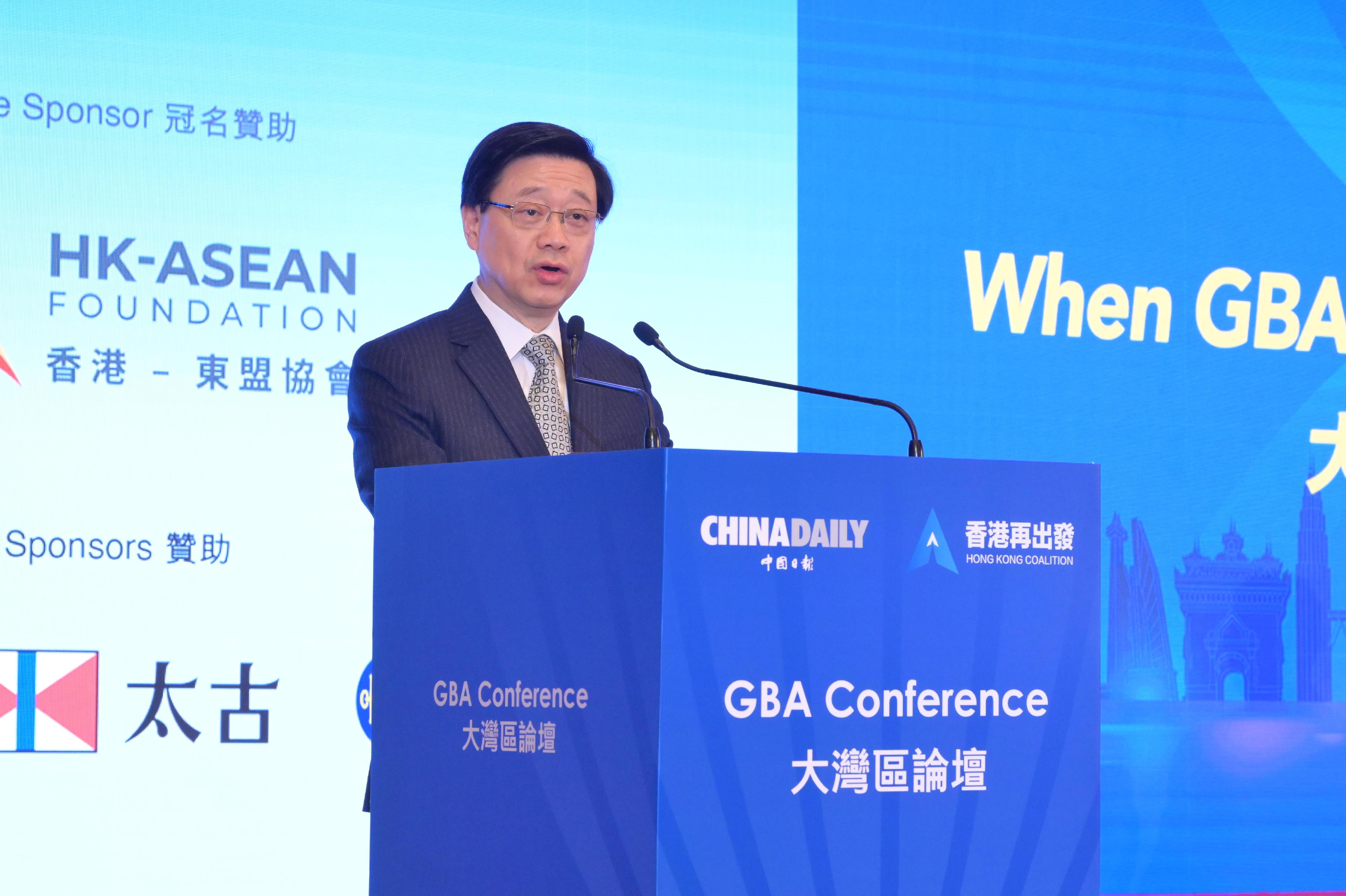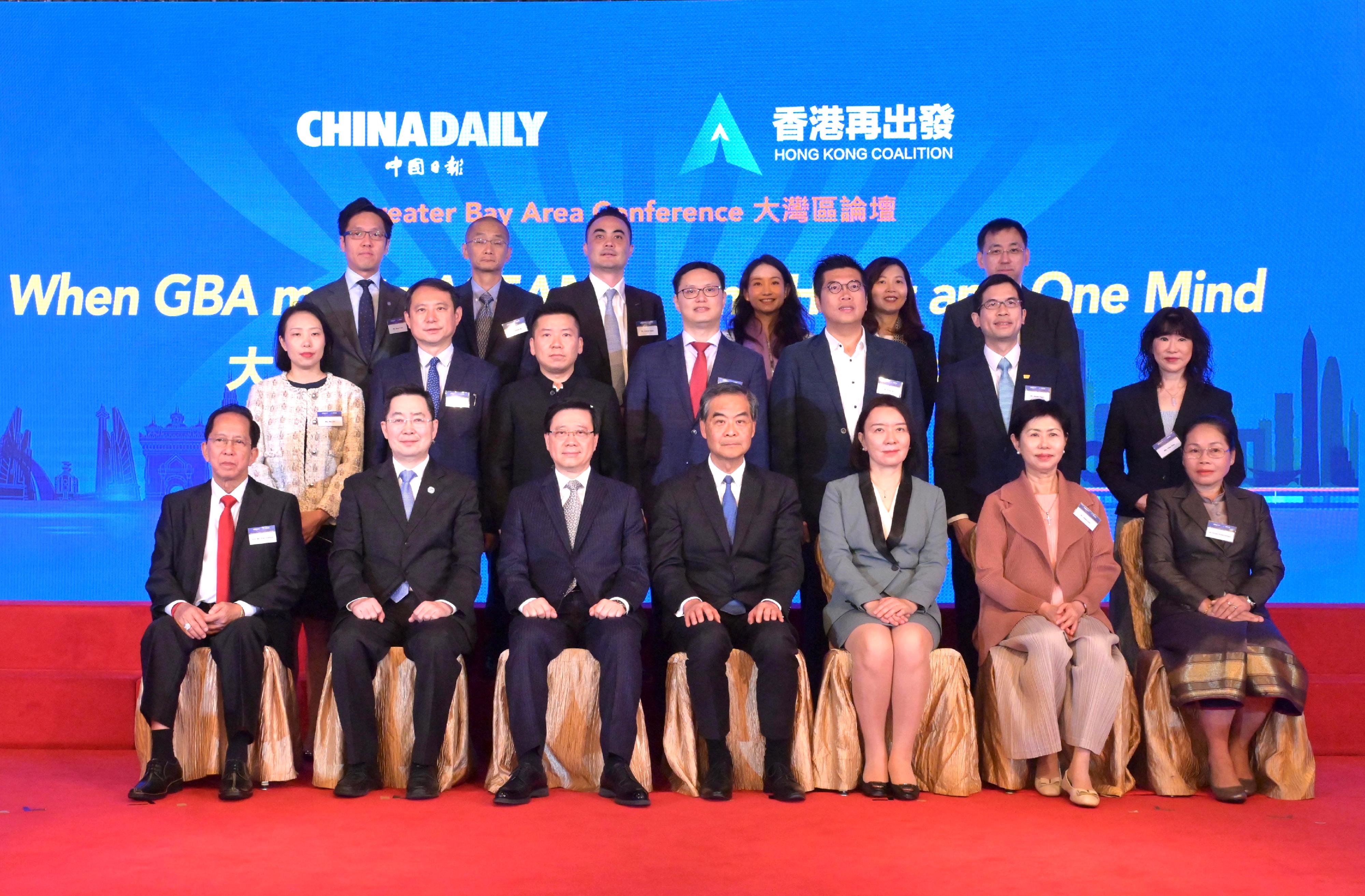LCQ15: Facilitating employees from multinational enterprises to work in Hong Kong
Following is a question by the Hon Chan Chun-ying and a written reply by the Secretary for Labour and Welfare, Mr Chris Sun, in the Legislative Council today (November 22):
Question:
It is learnt that there is a serious shortage of manpower in many professional sectors, particularly among middle managers and professionals, as well as an increased need for large-scale consolidated and multinational enterprises to internally redeploy overseas or Mainland employees to work in Hong Kong. However, applications by foreigners or Mainland residents to work in Hong Kong on grounds of intra-company transfer under the General Employment Policy and the Admission Scheme for Mainland Talents and Professionals require a significant number of supporting documents and lengthy processing time, which fails to meet the immediate need of enterprises for staff redeployment. In this connection, will the Government inform this Council:
(1) of the respective numbers of applications under the two aforesaid schemes in each of the past five years and, among such applications, the respective numbers of those made and approved on grounds of intra-company transfer;
(2) in respect of the aforesaid applications made on grounds of intra-company transfer, whether the Government has studied the further streamlining or enhancement of the vetting and approval procedures of the relevant schemes, in order to facilitate the expeditious redeployment of talents to Hong Kong by enterprises; if so, of the details; if not, the reasons for that; and
(3) whether, in addition to streamlining procedures, the Government has considered allocating to large-scale enterprises with good governance a certain percentage of quotas according to their total number of employees, with a view to allowing them to flexibly redeploy their staff to work in Hong Kong through internal procedures, thereby making up for the shortfall in local management and professional talents; if so, of the details; if not, the reasons for that?
Reply:
President,
The General Employment Policy (GEP) and the Admission Scheme for Mainland Talents and Professionals (ASMTP) are employment-tied schemes which aim to attract qualified overseas and Mainland talent and professionals to work in Hong Kong in order to meet local needs and enhance Hong Kong's competitiveness in the global market. These talent must possess special skills, knowledge or experience essential to Hong Kong and not readily available or in shortage locally to contribute to the daily operation of the concerned enterprises and sectors with a view to promoting economic development in Hong Kong. In view of the prevailing severe and broad-based manpower shortage, the Government has since the end of last year streamlined the process for the two schemes and extended the limit of stay of relevant visas so as to encourage admitted persons to settle in Hong Kong for development in the long term, thereby enriching the local talent pool.
Our reply, in consultation with the Immigration Department (ImmD), to the Member's questions is as follows:
(1) The statistics on applications received and approved under the GEP and the ASMTP in the past five years are tabulated as follows:
| Talent admission scheme | 2019 | 2020 | 2021 | 2022 | 2023 (as at October) | |
| GEP | No. of applications received | 45 288 (6 170) | 17 688 (3 667) | 15 515 (3 851) | 15 082 (3 103) | 22 806 (2 720) |
| No. of applications approved | 41 289 (6 024) | 14 617 (3 327) | 13 821 (3 614) | 13 495 (3 005) | 20 901 (2 661) | |
| ASMTP | No. of applications received | 16 413 (2 390) | 9 026 (2 498) | 10 485 (2 517) | 13 155 (3 661) | 18 556 (4 103) |
| No. of applications approved | 14 053 (2 060) | 6 995 (2 077) | 9 065 (2 281) | 11 768 (3 262) | 16 227 (3 705) | |
Note 1: Figures in brackets indicate the number of applications received and approved in respect of intra-company transfers.
Note 2: Applications approved in a year may not necessarily be those received in the same year.
(2) and (3) As mentioned above, the ImmD has implemented a series of facilitation measures for eligible employing companies and applicants, including simplifying the requirements of supporting documents. If an applicant is internally transferred from employing company's office outside Hong Kong to work in Hong Kong and the application fulfils the following requirements, proof of local recruitment exercise by the sponsoring company is not required:
- the post concerned is at managerial or professional level;
- the transferee has worked for the company for not less than one year;
- the remuneration package is commensurate with the prevailing market level; and
- the number of intra-company transferees sponsored by a company at any one time should be reasonable when compared to the total number of employees and the business nature of the company.
Other facilitation measures include:
(i) if the posts to be filled by applicants fall under professions in shortage of local talents as covered in the Talent List, or the vacancies on offer are with an annual salary of HK$2 million or above, employers are not required to prove their difficulties in local recruitment and may apply for talent admission directly; and
(ii) if the employing company is listed on the Main Board or Growth Enterprise Market of the Stock Exchange of Hong Kong Limited or has successfully obtained an employment or training visa/entry permit for a non-local employee in the past 24 months immediately before submission of the new application, it would not be necessary for the employer to submit the Business Registration Certificate, proof of financial standing, details of company background, business plan (e.g. business activities, mode of operation, source of funds) and staff list.
Applications for employment of outside talent to work in Hong Kong should be processed both efficiently and prudently. In processing each application, the ImmD will examine whether the applicant meets the specific eligibility criteria under the relevant admission scheme and normal immigration requirements, and will take into account the individual circumstances of each application. This is to ensure that only applicants meeting the relevant immigration policies will be admitted into Hong Kong for employment or stay. The Government will closely monitor the implementation of the two above-mentioned schemes, and there is currently no plan to introduce any quota on intra-company transfers for individual enterprises.

